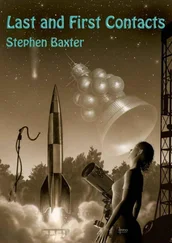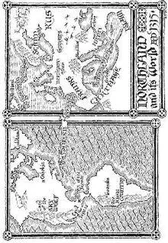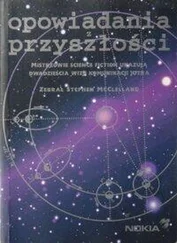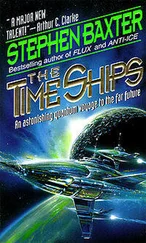And then a Martian rose up beyond the palace.
It was clearly visible, silhouetted against the sky, towering over the building like a man standing over a doll’s house. And then another, and another, and more beyond, which Walter saw as shadowy, complex pillars. Cowled heads turned this way and that, as if looking around, curious.
As the Martians were spotted, there were shouts, and cries of dismay – and, yes, more yells of defiance, even insults. The procession stumbled to a halt, the crowd compressing, pushing.
Meanwhile the lead Martian manipulated a cylinder – even so far away, Walter seemed to see every detail, the tentacular appendages cradling the instrument and positioning it carefully. Of course Walter could see nothing of the Heat-Ray itself, at this distance. The heart of the palace exploded, a shower of brick and glass and marble.
More fighting-machines stepped in their eerie triple-legged way through the burning ruin, waded easily through the shallow strait that separated Museum Isle from the mainland – and then strode boldly, and with remarkable speed, straight down the Unter Den Linden.
The crowd broke, lost its shape, turned into a mass of individuals fleeing or fighting to flee. The uniformed soldiers and police who had been supervising them turned and ran too. At last, Walter thought, pushing his way out of the crush, at last this was the social liquefaction he had seen before, the inevitable collapse of all human organisation before the overwhelming might of the Martian machines. But even now one or two resisted the receding tide; they sheltered behind trees and aimed weapons at the struggled to improvise barricades debris.
But the Martians came on, with appalling, overwhelming speed, bowling through the crowd. People were scattered and crushed just by the touch of those mobile, electrified limbs. And the Heat-Ray projectors played, deployed with unerring accuracy and ruthlessness: people flashed and burned, gone in an instant. It was not the slaughtered whose screams Walter heard now, but the screams of the injured, those whom the Heat-Ray beams had touched more carelessly, scorching off a limb, turning a back to a crisped cinder. And now came toofamiliar smells, the stink of roasted flesh, of burned brick, of melting tarmacadam where the Heat-Rays touched the road surface.
The guns in the Tiergarten started to speak at last, a rumbling thunder, and bangs from the big Navy weapons shook the very ground. Walter could see the shells rise, threading through the air. One smashed the bronze face of a Martian; the machine staggered and fell – a few in the fleeing crowd saw this and yelled in triumph – and two of its neighbours gave up the pursuit of the human crowd to bend over it, like soldiers solicitous over a fallen colleague. But as always most of the shells were shot out of the sky by the Heat-Ray, far short of their targets. Worse, errant shells were landing in the fleeing crowd, even as the Martians scythed through that mass of humanity – the Germans were killing more of their own than the Martians.
‘Bows and arrows against the lightning,’ Walter says he murmured to himself. ‘You were right, Bert.’ But they had to try, he realised, the Germans now like the English before them – and, through this last dreadful night, like the Americans and Chinese and Russians and Turks – they had to try. And Walter advancing Martians, or from fencing and other himself, so the deep-buried survivor part of him pressed now, had to save his own much-abused skin.
He joined the crowd pressing back down the Unter Den Linden, heading west once more. If he could get past the Brandenburg Gate, which loomed before him now, he might yet reach the Tiergarten. There the crowd was fanning out, he could see, keeping away from the military emplacements, making for the shade of the trees. Walter had hidden from Martians before, underwater, in wrecked houses; he could do it again.
But the crowd was dense, and going too slowly – and the Martian machines, scattering all before them, were coming up behind much too quickly. Walter pushed at the backs of those ahead of him, squirming through the crush.
And now a new noise erupted, coming from beyond the Gate, directly before Walter, a kind of thunder bellowing down from the sky. People screamed, ducked, scattered: ‘Is it the Martians?’
‘More of them?’ Walter, his progress blocked, scrambled for shelter under a chestnut tree, whose upper branches were already singed by a lick of the Heat-Ray. There he huddled, his knees against his chest. That towering noise still poured down from the sky.
And then Walter saw them, through the branches of his tree: aeroplanes, human machines, not Martian.
The centre of the group was an immense bomber, it must have been forty feet long, with four pulsing propeller engines; its course, parallel to the avenue below, was so low it seemed it must clip the top of the Brandenburg Gate, and as it passed over Walter’s head the noise from those engines battered at the ground in heavy, thrumming waves. This behemoth had a retinue of smaller planes, fighters, much faster, that darted high in the air or close to the ground, already deploying weapons with a clatter of automatic fire. Later, Walter would learn that the bomber he saw was a Gotha V, capable of reaching ten thousand feet; the fighters were the nimble, robust craft called Albatros – planes that had once, he recalled, crossed the Channel to strike at the Martians in London.
All this was itself strange to Walter, and terrifying. The best British planes were still wood and fabric biplanes, mere kites; German air power had developed out of all recognition in the great crucible of the Russian war. Now it was not the desolate plains of Russia over which these craft flew, but the heart of the capital.
Walter had to see it all, of course. He came out of what little shelter the chestnut tree afforded him, and pushed his way to the edge of the fleeing crowd. He saw the fighters duck nimbly through the air, their weapons clattering as they launched themselves at the hoods or limbs of the Martian machines – but their bullets appeared only to bounce off the sturdy bronze hoods of the Martians’ carapaces, and one by one they were touched by the Heat-Ray, almost gently it seemed, and their fragile structures crumbled, crisped and burned, and fell from the air.
But now the big bomber rose up – Walter saw it – and disgorged a load of munitions that rained heavy on the pack of Martians. The Martians fought back; the Heat-Ray projectors swivelled and snapped, and bombs popped out of existence, disintegrating harmlessly long before they reached their targets – but so plentiful was the load of the bomber that some of the munitions got through. The hoods of two Martians, three, four, exploded in dazzling flame. The crowds cheered deliriously. Walter saw more than one fighting-machine spin and topple, smoke pouring from the carapaces, and the ugly writhe of tentacles as the living occupants struggled to free themselves from the inferno. And as fireballs burst around their feet, more Martians staggered and fell, their forward march disrupted at last.
Walter would learn that the bombs used that day were incendiary weapons, D-class Elektron fire bombs, with casings of magnesium and Martian-manufacture aluminium that burned at a thousand degrees: another product of the eastern front, and tested on hapless Russian flesh. Well, the seals and linkages even of Martian machines were not immune to such temperatures. And even as the first bomber passed on, its load discharged, a deep thrumming announced the approach of a second craft, heading for the line of the Unter Den Linden as had the first.
But, as Walter watched, a handling-machine scurried through a fast-scattering crowd to the foot of the Brandenburg Gate. Somehow this machine had dashed ahead of its fellows, even as the taller fighting-machines had been targeted by the aircraft. Now, without hesitation, the handling-machine swarmed up one of the Gate’s pillars, like an outsized beetle clambering over a model, and Walter could clearly see the Martian riding the machine, a pulsing grey sack. With apparent ease the machine reached the plinth, and reared up alongside the crowning sculpture, the goddess in her chariot pulled by its four horses. And the Martian raised a bulky cylinder: a Heat-Ray projector.
Читать дальше










